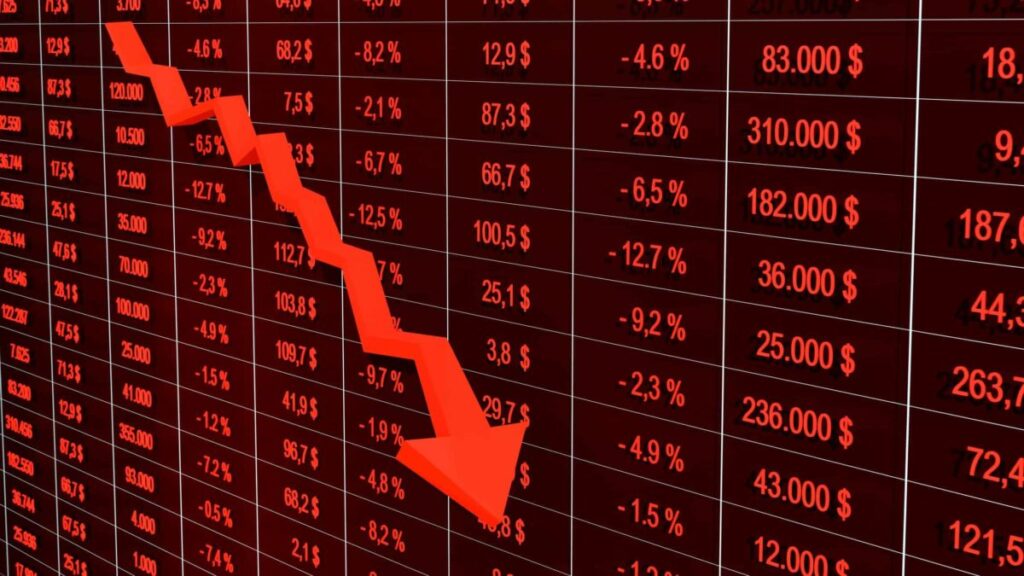
The fiscal year 2025 saw significant volatility in the Australian stock market, with the S&P/ASX All Ordinaries Index (ASX: XAO) posting a respectable rise of 9.47%. Despite this overall growth, some stocks faced severe downturns. This article delves into the five ASX All Ords shares that experienced the most significant declines in FY25, highlighting the challenges they faced and the broader market implications.
Market Overview and Context
While the S&P/ASX All Ords Index exhibited positive growth, it slightly lagged behind the benchmark S&P/ASX 200 Index (ASX: XJO), which rose by 9.97% and delivered total returns of 13.81%. The divergence in performance underscores the varied fortunes within the Australian equities market, where certain sectors and companies struggled despite the overall upward trend.
According to S&P Global data, total returns for the ASX All Ords, including dividends, reached 13.23% last financial year. However, not all companies shared in this success. The following sections explore the five companies that saw the steepest declines, analyzing the factors that contributed to their downturns.
Biggest Decliners of FY25
IDP Education Ltd (ASX: IEL)
IDP Education Ltd’s share price plummeted by 76%, closing at $3.67 on June 30. The company, known for arranging international student placements in Australia and conducting language tests, faced a challenging year. In May, IDP Education forecasted a 28% to 30% drop in student placements and an 18% to 20% decline in language tests for FY25.
Arthur Garipoli of Seneca Financial Solutions attributed the stock’s decline to government policy uncertainties regarding international students.
“While the share price has fallen to reflect the downgrade, we see better opportunities elsewhere,”
Garipoli remarked, highlighting the broader impact of policy instability on investor confidence.
Star Entertainment Group Ltd (ASX: SGR)
Star Entertainment Group’s shares fell by 72% as the casino operator grappled with financial instability and sought a crucial funding injection. The company’s stock closed at 13.5 cents, following an overwhelming investor vote in favor of a takeover by US-based Bally’s Corporation. The deal involves a $200 million investment from Bally’s, supplemented by $100 million from Star’s largest shareholder.
Mineral Resources Ltd (ASX: MIN)
Mineral Resources Ltd experienced a tumultuous year, with its share price dropping 60% to $21.56. The company faced declining iron ore and lithium prices, compounded by governance issues related to the CEO’s financial dealings. Founder Chris Ellison resigned as CEO but remains the managing director. The board mandated Ellison to pay $8.8 million in penalties and forfeit up to $9.6 million in remuneration.
Pilbara Minerals Ltd (ASX: PLS)
Pilbara Minerals saw its share price decrease by 57%, closing at $1.335. Like other ASX All Ords lithium shares, Pilbara Minerals was adversely affected by falling lithium prices due to a global oversupply. This trend has put pressure on the company’s financial performance and market valuation.
Platinum Asset Management Ltd (ASX: PTM)
Platinum Asset Management’s shares fell 56%, ending at 46 cents per share. The fund manager is considering a merger with L1 Capital, which owns the L1 Long Short Fund Ltd (ASX: LSF). Despite issuing an update on the potential merger on June 18, no significant price-sensitive news has emerged since. As of May 31, Platinum reported $8,339 million in funds under management, with a net outflow of approximately $1.6 billion during May, including a terminated institutional mandate worth about $958 million.
Implications and Future Outlook
The declines of these ASX All Ords shares reflect broader challenges in their respective industries, including regulatory uncertainties, commodity price fluctuations, and corporate governance issues. These factors have not only impacted individual companies but also influenced investor sentiment across the market.
Looking ahead, companies like IDP Education and Star Entertainment may need to navigate policy changes and financial restructuring to regain investor confidence. Meanwhile, resource-dependent firms such as Mineral Resources and Pilbara Minerals must adapt to volatile commodity markets.
As the market continues to evolve, investors will closely monitor these developments, seeking opportunities amid the challenges. The fiscal year 2026 will be pivotal for these companies as they strive to recover and capitalize on potential market shifts.





